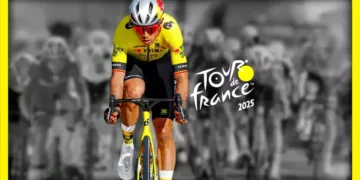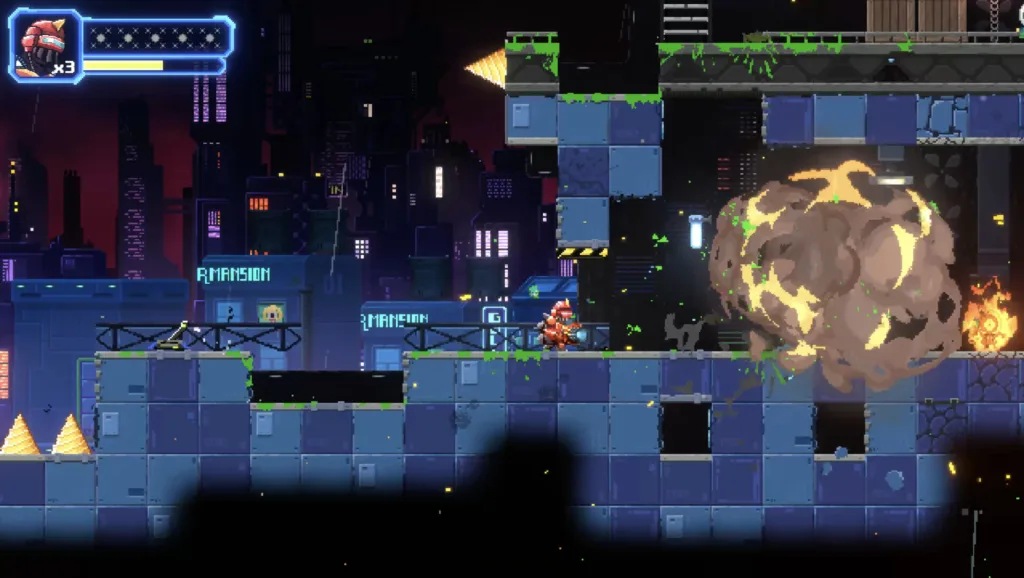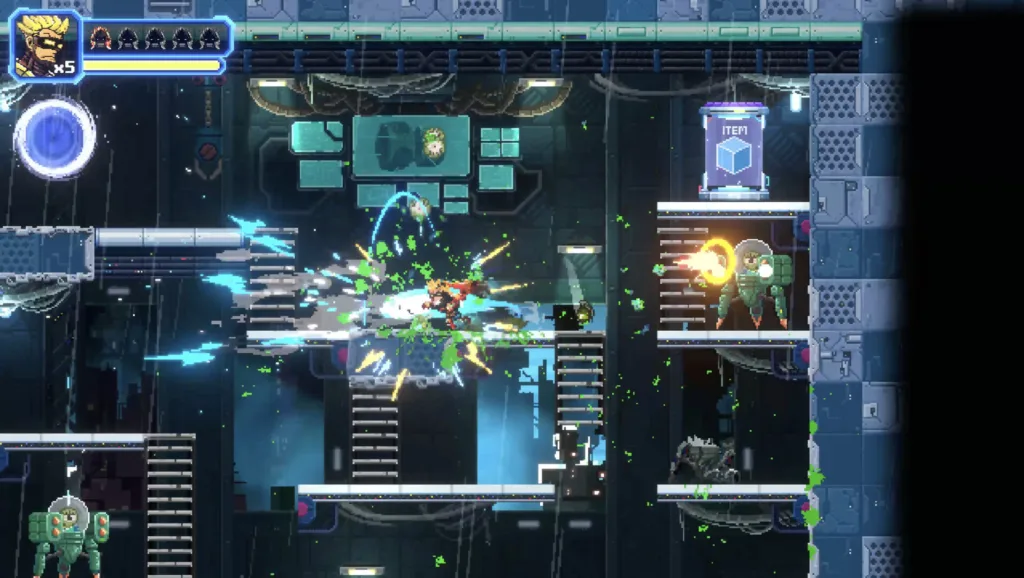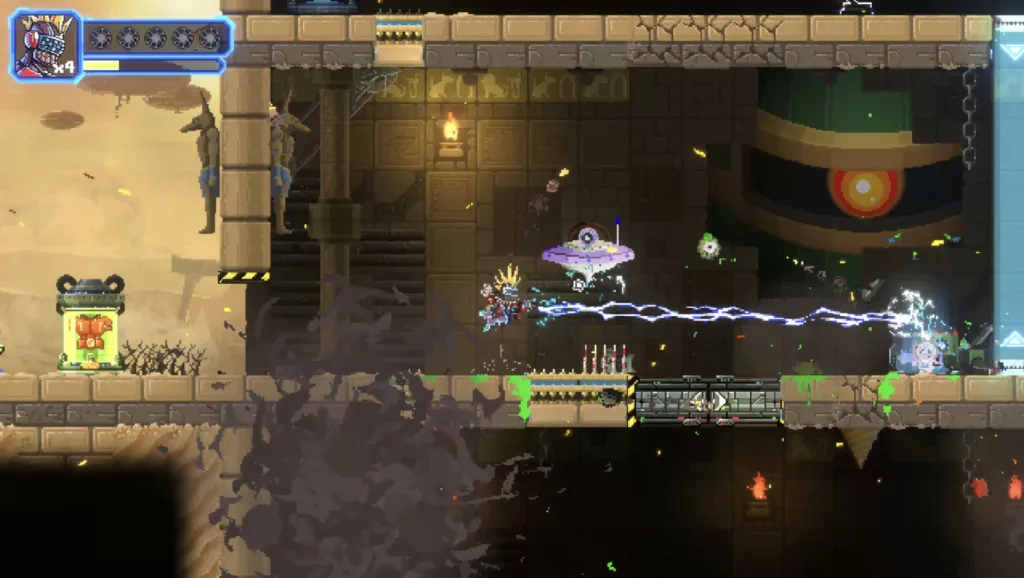Kevin, once known for his feats in saving the universe, now faces a disruption in his quiet retirement. His peaceful days are shattered when hostile forces demolish his sanctuary and claim the life of his faithful companion. Advanced technology restores him in a new, mechanical form, setting him on a mission driven by personal loss and the need for retribution.
The narrative blends light humor with dramatic twists, presenting a storyline that is straightforward yet enriched by extra details available through an in-game resource. These additional notes shed light on characters, foes, and even the settings, deepening the background without overwhelming the player.
The game integrates decision moments that influence combat and exploration, prompting players to adjust tactics as Kevin shifts from his original state to his armored capabilities. By combining classic revenge themes with elements of retro nostalgia and explosive action, the story not only informs the gameplay but also shapes the emotional stakes.
Every choice during the action sequences carries weight, as the evolving narrative ties directly into the dynamic combat and exploration systems, ensuring that the impact of player decisions remains clear throughout the experience.
The Mechanics of Action and Strategy
The game delivers a classic side-scrolling run-and-gun experience that keeps the player constantly on their toes. It features fluid movement combined with a dynamic combat system that rewards fast reflexes and thoughtful execution. As you traverse levels filled with enemies and obstacles, every jump and attack feels purposeful, reminiscent of solid entries in the indie action category.
The control system stands out with its ease of use and precision. Players can seamlessly switch between aggressive combat and careful platforming. Every action—from leaping across gaps to unleashing melee strikes—comes with satisfying feedback that confirms the intended outcome. This setup encourages players to experiment with various maneuvers while keeping the action clear and engaging, similar to what you find in well-regarded indie run-and-gun titles.
An interesting aspect is the tension built around managing Kevin’s powered-up suits. Each suit comes with a strict timer that creates a constant push and pull between offense and defense. The pressure to maximize the suit’s abilities before its effect wears off forces players to make split-second decisions that directly affect the course of the battle. This element of uncertainty fosters a decision-making process that has shades of choice-driven gameplay seen in many popular RPGs and indie adventures, where a single mistake can shift the momentum.
The game also rewards curiosity. Destructible environments hide a variety of rewards such as extra ammunition, health pickups, and sometimes even secret routes that lead to valuable upgrades.
This system turns every level into a puzzle where careful exploration can turn a challenging segment into an opportunity for gain. The blend of action, decision-making, and interactive level design creates a robust framework that appeals to both casual players and those looking for a technical challenge.
Armor of Chaos: Mastering the Metal Suits
The game introduces a compelling mechanic with various armored suits hidden throughout each level. These power-ups serve as temporary enhancements, operating under a time limit that governs both their effectiveness and durability. Each suit functions as a finite resource, creating an immediate need for tactical use during combat encounters.
The collection includes an assortment of options. Some suits offer heavy firepower, such as models equipped with rocket launchers or flamethrowers, while others allow for rapid, precise attacks like shuriken throwers.
There are also specialized models—one that deploys explosive devices and another that summons remote-controlled drones. Each suit visibly transforms the character, and these changes have a direct impact on gameplay style. For example, switching to a suit with area-of-effect capabilities might encourage players to engage groups of enemies, whereas a more precise suit could favor focused strikes.
In moments of intense action, managing the suit’s limited duration becomes a central challenge. During boss fights and hectic sequences, players must weigh the benefits of an active suit against the risk of it expiring mid-combat.
The system forces a series of split-second decisions that can dramatically alter the outcome of an encounter. A well-timed use of a suit’s special ability might clear a wave of foes or create an opening against a tougher opponent, highlighting the need for constant awareness and quick adaptation.
Exploration also plays a significant role in extending suit usage. Hidden caches of extra ammunition and health can be found by thoroughly searching each stage. This reward structure injects a sense of tension, where players are encouraged to explore with caution—balancing the lure of extended power against the risk of losing a suit during critical moments.
Worlds in Motion: Crafting Challenging Landscapes
The game presents levels structured as side-scrolling environments with multiple routes and hidden areas. Each stage is built with a clear path that gradually opens into additional corridors and secret rooms. These areas often conceal extra rewards such as suit upgrades, extra ammunition, and health refills, encouraging players to pause and inspect every corner.
Levels are designed with a mix of forward progression and exploration. The layout frequently splits into different segments that reward careful study. Destructible objects like walls and barrels serve dual purposes: they sometimes block the way or hide beneficial items that can extend the power of a suit. Players face choices about whether to blast through obstacles immediately or search for hidden passages that may offer a tactical edge.
The progression through various planets or worlds introduces new visual themes and hazards that keep each environment distinct. Each setting features its own design elements, from barren, mechanical backdrops to more organic, cluttered spaces. This variety ensures that while the core mechanics remain steady, the feel of each level shifts noticeably as you move through different worlds.
Environmental challenges come in the form of traps, moving hazards, and well-placed enemy ambushes. Many levels include vertical sections where abilities such as wall sticking or gliding come into play, adding extra complexity to platforming.
These elements demand careful timing and precision, pushing players to consider the risks of exploring deeper into each stage. The result is a design that invites repeated play, with each route and hidden area offering a fresh twist to the overall experience.
Boss Battles and High Stakes Encounters
The boss fights in this game vary from introductory encounters that ease you into the challenge to late-stage battles that test every skill you’ve honed. Early bosses serve as practice rounds with simpler attack patterns, while later opponents feature layered and intricate behaviors that require constant adaptation. Each battle demands careful management of your active suit, as its special abilities can tip the scales in your favor or leave you exposed if not used wisely.
During these encounters, the suit system proves to be vital. The timing of activating a suit’s special move can clear a swarm of foes or weaken a boss’s defenses, giving you a window to press the attack.
Players must decide quickly when to rely on the power of an upgraded suit and when to switch back to a more reliable state. This interplay injects a dose of tension into every boss fight, forcing you to balance aggression with careful timing.
As you engage with bosses, the buildup of tension becomes palpable. Each missed opportunity or untimely move can result in a punishing setback, highlighting the need for precision. The onslaught of enemy attacks is countered by the satisfying impact of well-timed special moves, making every victory feel earned.
The variety in boss mechanics ensures that repeated plays bring fresh challenges, keeping the gameplay engaging for those seeking both casual action and deeper strategic decision-making.
Visual and Audio Presentation
The game uses a retro, chunky pixel art style that calls back to classic titles. The artwork is straightforward and effective, giving each character a memorable look, especially when sporting the different Metal Suits with distinct designs.
The animations are smooth, providing a lively feel during intense combat scenes. Explosive pixel effects and dynamic movements add excitement to the action, ensuring that each burst of activity feels satisfying.
Sound design is a key element here. Every explosion and impact is marked by crisp audio cues that enhance the combat experience, giving a strong sense of weight to each move. The background music creates a fitting atmosphere, matching the visual energy even when its volume takes a quieter tone.
Additional effects, like screen shaking during high-energy moments, contribute to the immersive quality of the gameplay without obscuring important details on-screen. The interface remains clean and easy to read, keeping vital information accessible and the focus on the unfolding action.
The Experience: Challenge, Flow, and Replayability
The game presents a steady mix of rapid action segments and thoughtful exploration moments. Early stages gently introduce the core mechanics, easing players into the familiar side-scrolling action, while later stages demand exact timing and careful maneuvering.
Each level ramps up the intensity, ensuring that every playthrough feels fresh and engaging. A key element is the risk/reward system tied to suit management. The tension when switching between powered-up suits and the default state keeps each encounter charged.
The checkpoint structure and life system reward persistence, though mistakes carry noticeable penalties that keep players alert. This design instills a sense of urgency during combat while encouraging careful planning during quieter intervals.
Replayability shines through in the hidden secrets scattered throughout the levels. Alternate routes and concealed power-ups offer varied challenges, inviting repeated exploration and experimentation with different strategies.
This variety caters to both those seeking a more relaxed pace and players who thrive on technical challenges, ensuring that the game remains appealing across multiple sessions.
The Review
METAL SUITS: Counter-attack
Metal Suits: Counter-attack delivers a solid experience that mixes fast-paced action with thoughtful risk management. The responsive controls and varied combat options keep encounters engaging, while hidden secrets and dynamic level design invite repeated play. Its pixel art and crisp audio contribute to a memorable atmosphere, even if the narrative remains straightforward.
PROS
- Responsive controls
- Varied combat and suit mechanics
- Rewarding exploration
CONS
- Predictable story
- Limited enemy diversity




















































